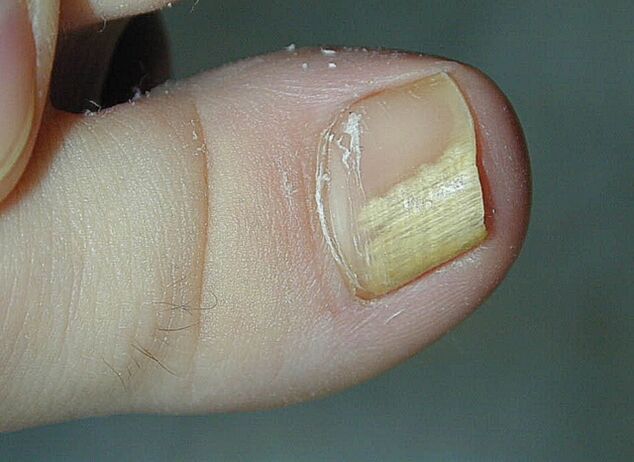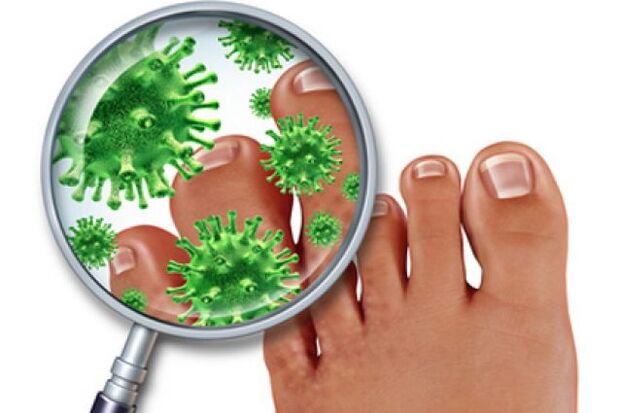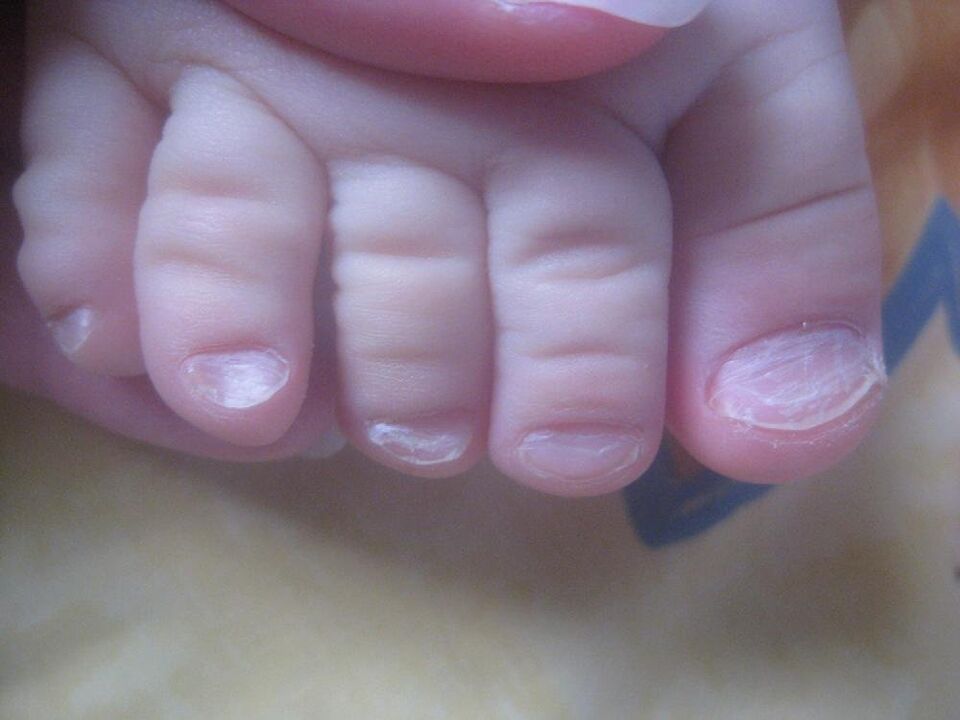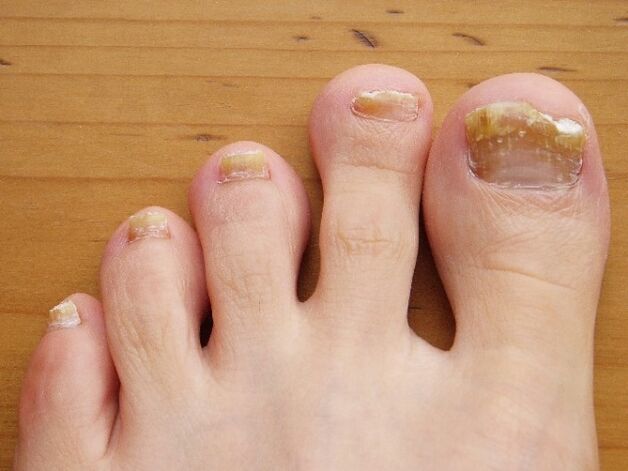Fungal diseases of the nail fungus or the nails and tissues of the hands and feet are common infectious diseases. It is caused by yeasts that destroy nail plates and cause dermatitis. In medicine, these diseases are called onychomycosis or paronychia. The usual misconception is that only people who do not keep their hands and feet clean can get sick with fungi. Most often, nail fungus affects those who, due to their profession or other circumstances, have to stay in their shoes for a long time.
Symptoms
The classification of the disease depends on the type of infection and the localization of its spread.
- Normotrophic onychomycosis is manifested by small changes in the structure of the nail plate in the form of yellowish spots and streaks along the nail. This is the least noticeable and often does not cause any inconvenience. The main problem is the appearance of the nail, which in the initial stage people try to hide with the help of cosmetics.
- Hypertrophic onychomycosis causes an increase in the volume of the horny plate of the nail. With this disease, a person may experience pain when they press their finger. This causes discomfort while walking in shoes.
- The superficial white fungus is distinguished by the roughness of the surface of the nail plates and unpleasant whitish spots.

A mycologist who specializes in fungal diseases can determine the cause of the disease and prescribe appropriate treatment.
Varieties of mushrooms
The symptoms of a fungal infection are similar, but your doctor will choose your treatment depending on the type of fungus that is causing the disease.
- Dermatophyte is the most common fungus that causes damage to the nail plates and surrounding tissues. It usually chooses the skin between the thumb, little finger and fingers. Easy to cure with early diagnosis
- Candida begins to work in the skin between the fingers and moves to the nail.
- Fusarium and Alternaria molds are rare and mostly occur in people with immunodeficiency
Reasons for appearance
The main cause of the infection is a violation of health regulations. But even someone who carefully monitors the cleanliness of their hands, feet, and things can become infected in common areas.
- Contact the mushroom carrier and things. This can be a visit to a spa or sauna, the use of custom foreign accessories or poorly worked manicure elements.
- Excessive sweating of the foot creates a favorable environment for the fungus to spread.
- The use of tight and poorly ventilated shoes made of artificial materials contributes to the development of high humidity, helps the development of the disease.
- A weakened immune system is unable to fight infection.
- Antibiotic treatment leads to a weakening of the immune system and the breakdown of the body's own microflora.
- Long-term use of antibacterial agents that kill beneficial bacteria along with pathogens
- Diseases of the blood vessels in the limbs reduce resistance and allow the fungus to disrupt the integrity of the skin to develop the disease.
- Manifestations of diabetes mellitus in the form of skin lesions provide a good environment for the development of fungal colonies.
- Wounds on the skin and cracks in the nails help the fungus to settle and start working.
- Visiting nail salons can trigger the appearance of fungal infections if health standards for processing the devices are not followed.

For children
Fungal infections are less common in childhood. This is due to the specifics of the organization. As you know, children’s feet are not exposed to excessive sweating. However, going to swimming pools and gyms can cause infection in children. Weakened immunity due to colds also contributes to this. In old age and adolescence, when a child has rapid hormonal changes, there is also a risk of catching a fungal infection. To protect against infections, shoes should be checked for cleanliness and washed in a timely manner with antiseptic compounds.

One of the causes of fungal infections in children may be a lack of vitamins in the body. It is desirable to make up for the deficiency with proper nutrition and complex vitamin therapy. A medical consultation will help you choose the quality composition of vitamin supplements for your child.
Development process
Favorable conditions are required for the development of a fungal infection. Sweat-soaked shoes and a neutral or slightly acidic environment provide comfort for the fungus to grow.
The unpleasant appearance of the nail, the itching and pain around the nail indicate the onset of infection. If you do not take part in the treatment, after a while the fungus will completely destroy the nail plate and reach the soft tissues of your fingers and feet. In the advanced stage of the disease, qualitative changes may occur in the form of blisters filled with a strong, unpleasant-smelling, cloudy fluid.
Complications
A common disease on the outer surface of the nail plate should not cause discomfort. In some cases, this condition can take years. The carrier of the fungus does not suffer on its own, but is able to pass the infection on to others.
The consequences of a fungal infection mainly affect the nails and the tissues around them, but in the future they may also have negative consequences for the health of the whole organism.
The growth of fungal colonies causes pain in the legs and makes it difficult to wear shoes. The nails change shape and can grow into the tissues of the fingers, causing unbearable pain while walking.

The breakdown of the immune system caused by toxins released during the life of the fungus leads to frequent colds and inflammatory processes in the body.
Allergic reactions to fungal products lead to a number of respiratory side effects as well as liver and kidney disease.
An infection in the body can cause conjunctivitis and rhinitis of various etiologies. Itchy skin, red spots and irritation can affect not only the sites of initial localization of fungal colonies, but also the skin of the body and head. It also affects the condition of the hair and facial skin. It can be part of the cause of dandruff.
The constant itching and discomfort caused by the illness is a fairly common reason for visiting a neurologist and psychotherapist.
An advanced form of the disease can lead to loss of nails and deformity of bones and joints.
Prevention
Hygiene must be carefully observed not only in public places but also in personal places to avoid infection.

This is forbidden:
- Use general hygiene products. Every family member should have their own nail clippers, doormats, soap and more.
- You can't use someone else's shoes. The infection can easily spread through a common slipper in the family.
- Wash the patient's things with everyone else. It should be recalled that not all detergents and detergents can kill a fungus. This infection is very persistent. The clothing of the sick person must be handled with special solutions. This is especially true for shoes. Rinse thoroughly from the inside and replace the insole frequently.

























